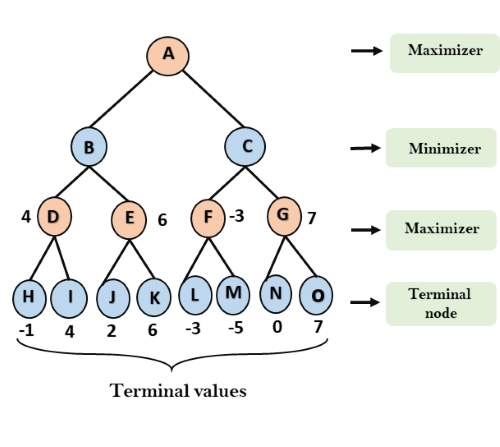- Python Min Max Normalization
- Python Min Max Average
- Python Min Max Scaler
- Python Min Max Scaler
- Python Min Max Function
Let’s talk about using Python’s min and max functions on a list containing other lists. Sometimes this is referred to as a nested list or a lists of lists. Finding the minimum or maximum element of a list of lists 1 based on a specific property of the inner lists is a common situation that can be challenging for someone new to Python. Featurerange tuple (min, max), default=(0, 1) Desired range of transformed data. Download for free wirecast macbook pro. Copy bool, default=True. Set to False to perform inplace row normalization and avoid a copy (if the input is already a numpy array). Clip: bool, default=False.
Transform features by scaling each feature to a given range.
This estimator scales and translates each feature individually suchthat it is in the given range on the training set, e.g. betweenzero and one.
The transformation is given by:
where min, max = feature_range.
This transformation is often used as an alternative to zero mean,unit variance scaling.
Read more in the User Guide.
Desired range of transformed data.
Set to False to perform inplace row normalization and avoid acopy (if the input is already a numpy array).
Set to True to clip transformed values of held-out data toprovided featurerange.
New in version 0.24.
Per feature adjustment for minimum. Equivalent tomin-X.min(axis=0)*self.scale_
Per feature relative scaling of the data. Equivalent to(max-min)/(X.max(axis=0)-X.min(axis=0))
Per feature minimum seen in the data
New in version 0.17: data_min_
Per feature maximum seen in the data
Per feature range (data_max_-data_min_) seen in the data
New in version 0.17: data_range_

The number of samples processed by the estimator.It will be reset on new calls to fit, but increments acrosspartial_fit calls.
See also
minmax_scaleEquivalent function without the estimator API.
Notes
NaNs are treated as missing values: disregarded in fit, and maintained intransform.
For a comparison of the different scalers, transformers, and normalizers,see examples/preprocessing/plot_all_scaling.py.
Examples
Methods

| Compute the minimum and maximum to be used for later scaling. |
| Fit to data, then transform it. |
| Get parameters for this estimator. |
| Undo the scaling of X according to feature_range. |
| Online computation of min and max on X for later scaling. |
| Set the parameters of this estimator. |
| Scale features of X according to feature_range. |
fit(X, y=None)[source]¶Compute the minimum and maximum to be used for later scaling.
The data used to compute the per-feature minimum and maximumused for later scaling along the features axis.
Ignored.
Fitted scaler.
fit_transform(X, y=None, **fit_params)[source]¶Fit to data, then transform it.
Fits transformer to X and y with optional parameters fit_paramsand returns a transformed version of X.
Input samples.
Target values (None for unsupervised transformations).
Additional fit parameters.
Python Min Max Normalization
Transformed array.
get_params(deep=True)[source]¶Get parameters for this estimator.
If True, will return the parameters for this estimator andcontained subobjects that are estimators.
Parameter names mapped to their values.
inverse_transform(X)[source]¶Undo the scaling of X according to feature_range.
Input data that will be transformed. It cannot be sparse.
Transformed data.
partial_fit(X, y=None)[source]¶Online computation of min and max on X for later scaling.
All of X is processed as a single batch. This is intended for caseswhen fit is not feasible due to very large number ofn_samples or because X is read from a continuous stream.
Python Min Max Average
The data used to compute the mean and standard deviationused for later scaling along the features axis.
Ignored.
Fitted scaler.
set_params(**params)[source]¶Set the parameters of this estimator.
The method works on simple estimators as well as on nested objects(such as Pipeline). The latter haveparameters of the form <component>__<parameter> so that it’spossible to update each component of a nested object.


Estimator parameters.
Estimator instance.
transform(X)[source]¶Scale features of X according to feature_range.
Input data that will be transformed.
Transformed data.
Get the minimum value of column in python pandas : In this tutorial we will learn How to get the minimum value of all the columns in dataframe of python pandas. How to get the minimum value of a specific column or a series using min() function.
Syntax of Pandas Min() Function:
| axis | 0 – Rows wise operation |
| 1- Columns wise operation | |
| skipna | Exclude NA/null values when computing the result |
| level | If the axis is a Multi index (hierarchical), count along a particular level, collapsing into a Series |
| numeric_only | Include only float, int, boolean columns. If None, will attempt to use everything |
We will looking at an example on
- How to get Column wise minimum value of all the column.
- Get minimum value of a specific column by name
- Get minimum value of series in pandas python
- Get minimum value of a specific column by index
Create Dataframe:
So the resultant dataframe will be
Get the minimum value of all the column in python pandas:
This gives the list of all the column names and its minimum value, so the output will be
Get the minimum value of a specific column in python pandas:
Example 1:
This gives the minimum value of column Age so the output will be
Python Min Max Scaler
Example 2:

This gives the minimum value of column Name so the output will be
Get the minimum value of a specific column in pandas by column index:
df.iloc[] gets the column index as input here column index 1 is passed which is 2nd column (“Age” column) , minimum value of the 2nd column is calculated using min() function as shown.
Get Minimum value of the series in pandas :
Python Min Max Scaler
Lastly we would see how to calculate the minimum value of a series in pandas by using min() function . First lets create a series of alphabets as shown below
created series is
Minimum value of a series is calculated using series.min() function as shown below
Python Min Max Function
so the resultant min value of the series is
